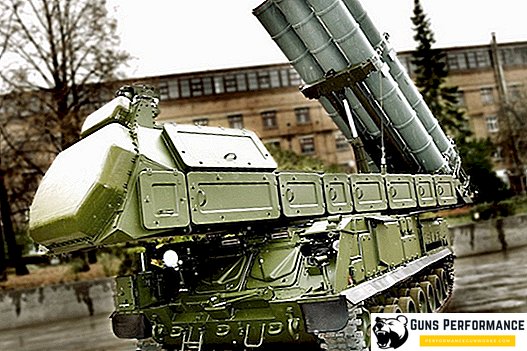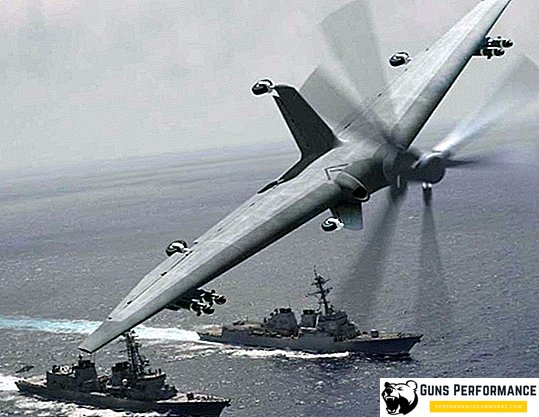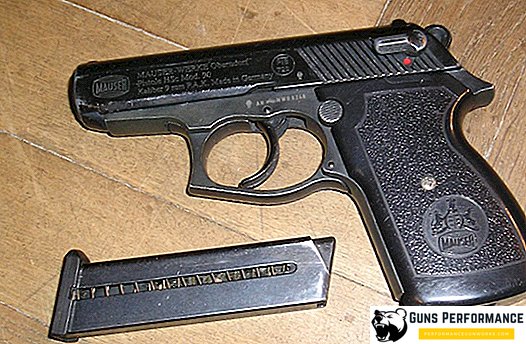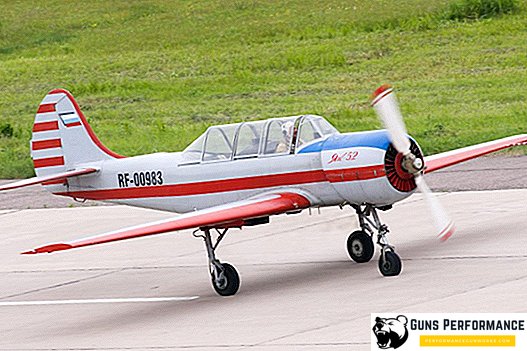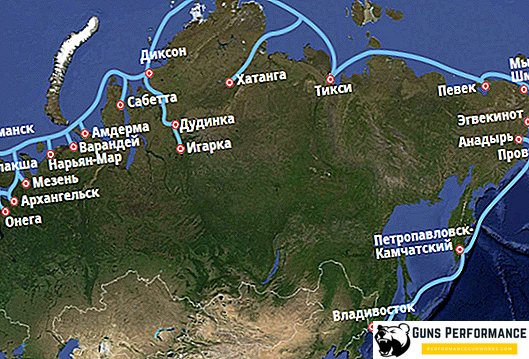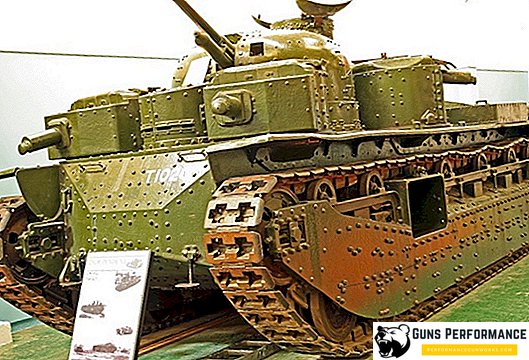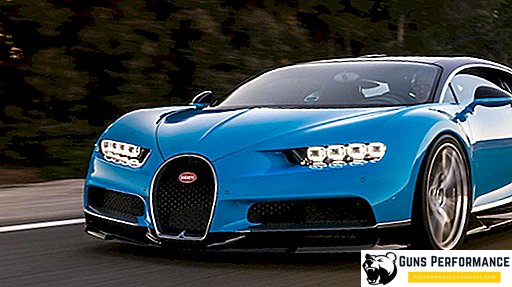The history of the still imperfect and ineffective police stun weapons used by contact (pressing the weapon directly to the offender's body) began in the USA in the early 1960s, but it became really effective thanks to John (Jack) Higson Cover to an American physicist and research scientist in charge NASA, who worked on the Apollo project of the US lunar program.
In 1983, the company Nova Technologies USA, founded in 1983, released the first model of the really effective contact stun gun "XR-5000", in the electrical circuit of which the Cover patent was used (US Cover No. 3803463), where for the first time in ESHO an extremely effective a schematic principle of building a high-voltage Pearson-Anson-Cover. In the same company, the term "stun gun" itself appears for the first time, which today means classic stun guns.
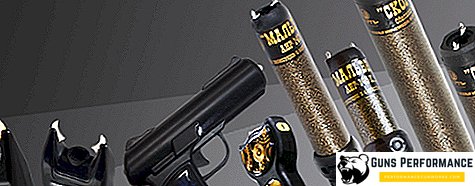
At present, electroshock devices (weapons) can be divided into two main groups, namely, contact and remote ones.
Contact stun guns (ESD, ESD) affect the offender only when the stun gun itself is in contact with the offender's body and thus the distance of their action does not exceed the distance of the user's extended arm.
Remote stun guns (DESCO, DASH) affect the offender through wires fired from a remote stun gun into the offender and thus the distance of their action allows you to prevent the offender from reaching the user at a distance of a strike by hand, foot or stick.
Contact stun guns are devices that can affect the offender, both contact and remotely, at the user's choice. Basically, all remote stun guns can, in one way or another, affect the offender with a contact, so that at present the terms "remote stun gun" and "contact and remote stun gun" are simply synonyms.
The main number of DESO models on the Russian market can act only with unattached (or disconnected, removed) shooting cartridge (nozzle on the stun gun from which probes are fired on the wires in the offender).
If you try to act on the offender with a contact with an attached shooting cartridge, a slight mechanical injury is possible for the offender in the place where probes (darts) with wires get into his body, but nevertheless, an electroshock effect will be achieved.
The founder of the remote stun weapon subsequently received the international abbreviation "TASER" was also John (Jack) Cover, which In 1969-1970. creates the first in the world ("Model I") operating model of remote electric stun guns (US patents No. 3803463, US No. 4253132) "Power supply for weapons for immobilization and capture" with a priority of July 10, 1972).
It is worth noting that the first serial model of the Cover called TASER "TF-1" was multiply charged (dual charged); however, due to various technical difficulties, the double-shot device was unreliable and in subsequent models the Carpet refused to double-shot to one shot.

In the West, a single-charge DESO is represented by several well-known models of the company Taser Int. and the main one is the most effective and widely used model of the TASER "TASER X26" used by the police and civilians.
In Russia, the MART GROUP, Oberon Alfa and Thunder releases the single-charge DASHO of several models.
Multi-charge DASHO
In 2003, at the 2nd European Symposium on Non-lethal Weapons, among the experts of the symposium, for the first time, remote electric shock weapons were mentioned (the abbreviation "Taser" in the report "Stand-off electrical Incapacitation (Plasma-Taser)".
By this time, the Taser Int company TAShO was already widely known in the world. for citizens and "AIR TASER" and "ADVANCED TASER M26" for the police. In the same 2003, the most popular model "TASER X26" appears. All these models were singly charged, with the main disadvantage of slow reloading with a firing cartridge and, accordingly, the inability to quickly produce the second shot at a misfire or a miss as a result of the first shot.
At the 5th European Symposium on Non-lethal Weapons at the start May 2009 g. The report of the Russian specialists on the creation of multipurpose remote stun weapons "MULTI-SHOT REMOTE ELECTRIC SHOCK WEAPON" was published and only on July 27, 2009 was Taser Int. Presented the first multiply charged model TASHO "TASER X3".
In general, the work on the first multiply-charged models of remote stun weapons began in Russia much earlier than the work on the Taser Int. Specialists on such weapons. in USA. Russian application RU for the invention “Manual multiply-charged weapons for remote destruction of targets by electric current” No. 2005113752/02, was filed as early as 05.05.2005 (patent RU No. 2305245).

In the West, the single-charge DESO is gradually giving way to the multiply charged DEHO of the "TASER X2" model, which is double-charged (any weapon that allows more than one shot without introducing a new cartridge (cartridge) into the weapon with both hands is considered a multiple-charge weapon). In the US, there is also a less common three-charge model DESO "TASER X3".
In Russia, the multi-charge DESO is represented by the only model of the DESCO “GARD”, the company “AO RTEX-BUT”, although the development of the multi-charge DESO is conducted by several domestic companies producing electroshock weapons and, in particular, by the “MART GROUP”.
The effectiveness of the DESO
The effectiveness of the impact of electrical impulses ESHO and DESHO on a biological target depends on a number of parameters, such as total output power or amount of electricity, pulse frequency, pulse duration, pulse shape, pulse amplitude at a known load, pulse shape, and no-load voltage responsible for thickness of the clothes punched by electricity on the offender.
The impulse electricity transmitted to the target for the American Ahoñn-Taser models is 63 ± 9 microculents (µC). For Russian-made shockers, these figures are in the range from 20 to 700 μC. Indicators of the majority of models of Russian stun guns that have passed state tests adopted by the police and allowed for use by citizens correspond to the American ones and are 50-60 µC.
The duration and form of the impulses of the Russian and American shockers are also about the same. The amplitude of the load on the Russian models in most cases more. In addition, the higher efficiency of the impact of the Russian ESHO and DESCO is due to the high pulse frequency.
It should be noted that the Russian and American concepts of non-lethal stun weapons differ significantly. In Russia, a high frequency of pulses is recognized as more effective in affecting a biological target, with a low probability of causing cardiac arrhythmia or fibrillation. The loyalty of this concept is confirmed by the time: for more than 20 years of use of stun weapons in Russia, there have been no deaths from the use of high-frequency ESHO.
TASER models use a low frequency of damaging pulses of 15-20 Hz, most Russian shockers have a frequency of 100-300 Hz.
Reference:
In Russia, the ESCO model of its own Russian development (the company MART-GROUP) began to be produced since 1993, and the first model of the Russian single-charged DEHO appeared on the Russian market in 2007. Thus, Russia (the MART-GROUP company) became the second country after the United States to launch the production of models DashO own design.

In contrast to the concept of the company "Akhon-Taser", which provides for multiply charged DASHO the possibility of damaging and holding under the influence of electric current several bio-targets simultaneously (the technology of the company Taser Int. Called "Rotational-Pulse Drive") for example 3 goals in the DASHO "TASER X3" and 2 targets in the TASER X2 DESC, the Russian concept provides for the possibility of destruction and retention of targets under the influence of an electric current only in a sequential order.
At first glance, the possibility of hitting several targets at the same time makes American shockers much more efficient compared to Russian ones. Meanwhile, this opportunity is only an apparent advantage.
Studies and experiments carried out in Russia clearly demonstrated that the amount of electricity produced by a single stun gun would not be sufficient to effectively affect several targets at once. And this is despite the fact that the Russian medical standards for the permissible output power of electroshock weapons exceed the corresponding standards adopted by the company Akhon-Taser.
This is confirmed by the considerable number of cases of ineffective use of stun guns by US police officers in real situations. Videos with similar stories in sufficient quantities published on the Internet.
As practice shows, the need to defeat and hold several targets at once is not so great. Russian experts in the field of electroshock weapons are sure that it is much more expedient to develop a DESCO, the impact of which will quickly and reliably ensure immobilization for a period of up to several minutes.
Electric bullets
Known bullet "Taser XREP" (Extended Range Electronic Projectile), with an electrical effect on the bio-goal development and production of the company Taser Int. providing an electrodirection of the bio-target at a distance of up to 20 m. However, at present, the widespread use of the XREP bullet is not observed since its shortcomings have already been identified, which consist in high cost with insufficient efficiency of electrical impact, short range of damage and complete inability to work on clothing targets even in spring - Autumn type, not to mention thick or winter clothes.
The "XREP" bullet has a caliber of about 18.5 mm and a considerable mass, therefore, when fired by such a bullet at a distance less than the allowable bio-goal, it can receive significant general mechanical injuries, and if it hits the heart region, the mechanical shock effect can lead to the "commotio" effect cordis ", that is, cardiac arrest as a result of a stroke.

The caliber of 18.5 mm (the 12th hunting caliber of smooth-bore guns) can now be taken as a normal caliber for stun shells, smaller caliber bullets with an electric impact should be considered small-caliber.
Information on serious developments of electric bullets in other countries has not yet been reported, although patents for electric bullets are known. For example, in Russia, the MART GROUP company holds a patent for an electric bullet.
Long-distance wire desh
In 2010, Russia developed the concept of creating a long-range wired DESCO in the form of a short-barreled shotgun or a carbine firing probes with non-insulated conductors up to 20-25 m. Non-insulated aluminum spring conductors were chosen as the lightest, not allowing sagging to the ground and mutual intersection with a short circuit at the specified distance of the shot.
The concept of damage due to the non-isolation of the conductors and the possibility of their mutual interlocking almost immediately after the probes hit the target also provided for the destruction of the target with a single high-voltage pulse with pulse energy up to several joules (1-5 J). Such a pulse from the discharge of a high-voltage capacitor should be transmitted to the target instantly after the probes hit the target and possible interbinding of non-insulated conductors.

Design studies have allowed to create long-range stun guns in the form of a rifle-carbine with a pneumatic, or (and) firearms principle throwing probes with conductors at the target. At the same time, the number of electroshock charges to be fired should have been 30 pieces, and the shooting was assumed to be both normal and automatic (by turns). Unfortunately, for various reasons, the existence of existing models or commercially available samples of long-range wired DEHO is unknown to date.
Nano-second Electrical Pulse (nsEP-technology)
In 2004, scanty information appeared in the press that in the United States research is being conducted on the effects on biological objects of short (nanosecond) damaging pulses of electric current. Studies of the effects of nsEP pulses in the United States were funded by the US government (military).
The main difference between the impact of nsEP-technology pulses from other existing technologies of electrical effect is a long after-effect after switching off the current, up to complete immobilization of the bio-object for tens of minutes after the cessation of the impact of current pulses.
After some time, the publication of nsEP effects ceased. According to some data in the USA it was not possible to create a DESCO with a nanosecond exposure in dimensions suitable for wearing on the human body (for example, in a holster).
Work on the nsEP-impact was continued in Russia. The experiments carried out proved the actual presence of a long after-effect after the application of nsEP-effects to bio-targets. At present, it has been possible to create small-sized samples of nanosecond high-voltage generators placed in ESD or DESCO of a hollow type or in the form of a short-barreled shotgun or carbine.
Scuba desho
At present, it is not known about the development, production and use in any country of the world by the DEHO working against underwater saboteurs or other offenders in the aquatic environment, including saline sea water.
However, Russian specialists are already working to study the possibilities of creating a DESCO working in the aquatic environment. Experiments have proved the possibility of transmitting a striking electrical discharge to a bio-target with both a naked body and a wetsuit in water (incl. Saline) to a distance of 2-3 m.

Land and flying drones with DESO
Back in 2007, the company Taser Int. for the first time, a single-charge DERO was installed on the platform of the well-known "PackBot" IRobot. However, to date, it is not known about the real applications of the DESCO from wheeled or tracked drones in police practice. Nevertheless, today this direction should be considered extremely promising.
To date, a large number of mass-produced wheeled and tracked robotic platforms are known. Ground drones equipped with multiply charged DASHOs can be used primarily as robots, guards of storage and production-office premises and territories, private households from unauthorized intrusion of intruders.
At the same time, drones must be equipped with a police call system at the place of application of the DESCO, as well as a monitoring system of the health of the attacker affected by the DESCO to prevent the attacker from excessive exposure to the electric shocks in the process of keeping the attacker in place.
Specially armored from small arms bullets, ground drones with the DESCO can be used to bloodlessly detain terrorists and criminals armed with firearms hiding behind natural barriers on the ground or in premises.
In 2014, in the USA for the first time a single-charged DERO by Taser Int. was installed on the hexacopter. A biotarget (volunteer) was fired from a hexacopter in a hover mode.
Since the control of the hexacopter was not carried out in the FPV (First Person View) mode, this experiment cannot be considered a real flight application of a remote shocker from a flying drone.
To date, there are no known real applications of the DASHO with flying drones in police practice. Such application, first of all, is hampered by the single charge of the DESCO and the insufficient range of action. The use of electric bullets, such as the Taser "XREP" type, cannot be considered effective either because of the ineffectiveness of such bullets (see Electric bullets) and because there are no weapons for firing bullets of the specified type suitable for mounting on light drones.
The ShaserHawk police drone-helicopter drone Taser "XREP" weapons projects in the United States have never been implemented. A promising direction should be considered to be the installation on police drones of either a long-range wired DEHO (see Long-distance wired DEHO), or installing a specially designed firing device on drones to use the developed small-caliber bullets with an electric impact.
DASHO with monitoring the health of the offender
The problem of avoiding unnecessary time or power impact of the DESCO on the offender has long been part of the research of manufacturers of DESCO.

For the first time, the monitoring system of heart rate (heart rate and heart rhythms) using the DESCO was patented in the USA. Должен был использоваться электрокардиограф встроенный в само ДЭШО, а сигналы датчиков сердечного ритма должны были передаваться про тем же выстрелянным токопроводам ДЭШО по которым к правонарушителю должны были передаваться поражающие электрические импульсы.
Тем не менее, до настоящего времени неизвестно ни действующих моделей ДЭШО с мониторингом сердечной деятельности, ни тем более серийных образцов. Перспективнее использовать видеомониторинг с элементами искусственного интеллекта. Состояние правонарушителя подвергаемого поражающему электрическому воздействию будет оцениваться по обработке видеоряда видеокамеры ДЭШО (мимика тип судорог, дыхательные функции и пр.) и на основании обработки процессором ДЭШО видеоряда степень воздействия ДЭШО будет регулироваться.
Будущее ДЭШО
В недалеком будущем вероятно замена всех однозарядных типов ДЭШО многозарядными с числом зарядов не менее 2-х и до 5-8.
Вероятно появление дальнобойных типов ДЭШО как проводных, так и беспроводных с электрическими пулями. Ведутся работы и над беспроводными типами ДЭШО в которых поражающие электрические импульсы передаются к цели по различным типам ионизированных или электропроводных каналов иного типа без проводов. Уже доказана возможность передачи поражающих электрических импульсов к цели на расстояние от десятков сантиметров до 1-1,5 м.
Вероятно дальнейшее оснащение моделей ДЭШО элементами искусственного интеллекта, с более информативными дисплеями, чем те дисплеи, которые применяются на современных моделях ДЭШО, при этом, скорее всего, все модели ДЭШО будущего будут иметь возможности изменения различных, не касающихся безопасности использования, настроек через интернет-приложения.

Вероятны разработки серийных наземных и летающих полицейских дронов, действующих в режиме FPV и оснащенных многозарядным ДЭШО той или иной дальности действия.
Вероятны разработки дальнобойных и многозарядных типов ДЭШО с выраженным последействием на принципе nsEP-воздействия в виде карабинов или возимых на автомобильном (или ином) легком транспорте.
На сегодняшний день дистанционное электрошоковое оружие признано наиболее эффективным среди всех видов нелетального оружия для остановки и захвата правонарушителей. По эффективности оно несколько уступает использованию специально тренированных собак, но только в тех случаях, когда правонарушитель не владеет приёмами обороны от нападения собаки.
Вследствие своей непревзойденной эффективности ДЭШО неизбежно будет развиваться и вероятнее всего, в конце концов, займет место полицейского огнестрельного оружия в подавляющем большинстве случаев борьбы с правонарушителями не угрожающих огнестрельным оружием.



